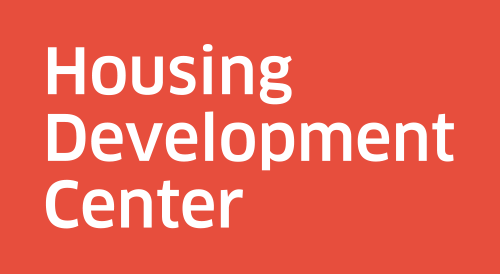Make time for asset management planning with these 4 practices.
When we talk about an asset management plan at HDC, we mean all the policies, procedures, goals, strategies, and tools that guide and facilitate the work of managing an affordable housing portfolio’s long-term health. If you’ve ever drafted a compliance chart for one of your properties or created a milestone chart for your portfolio, you’ve done asset management planning. If you do annual budgeting and rent analysis for your properties, you’re doing asset management planning.
Asset management planning is hugely important, and it’s never finished. But when your plate is always filled with urgent tasks, long-term planning work can fall off the edge. How do you make time to plan? Here are four practices we recommend.
Practice 1: Prioritize.
A time-management tool every asset manager should know about is the urgent/important matrix (also known as the Eisenhower matrix). Its purpose is to help you set priorities. In addition to deciding what tasks to prioritize based on how important and urgent they are, arranging your tasks in an urgent/important matrix can help you see where most of your time is going.
You can easily find instructions on how to set up and use an urgent-important matrix on the internet. Here’s an example of what a completed matrix might look like:
Practice 2: Plan 12 months ahead.
Drafting an annual asset management task calendar will give you essential information to help you structure your time effectively and set day-to-day priorities with greater clarity and confidence. Include major tasks that you can anticipate and plan for over a 12-month period. The example calendar below includes recurring tasks related to funder compliance and property management oversight. (These tasks are listed in the “Do” quadrant of the example urgent/important matrix above.) It also includes long-term-planning tasks, indicated with red type. (They are listed in the “Plan” quadrant of the urgent-important matrix.)
Start with the most important thing: rest and rejuvenation! Block out your planned vacation time and don’t let your task deadlines bump into it.
Don’t forget to include tasks associated with your properties’ whole life cycles—tasks that don’t recur annually, in other words. (See Practice 3.)
Set a target completion date for each task. Then outline related tasks/events that need to occur first and work backwards to understand when you need to get started with each piece.
If there’s too much to do in a specific month, look for ways to drop, delegate, or reschedule some of the work. Notice how the example calendar above shows that board annual reporting has been moved from March to a less busy month, May.
Practice 3: Find efficiencies.
Even marginal efficiency gains can add up to extra room on your plate over time. Consider these time-saving tools and strategies:
Invest time at the right point in a project’s life cycle. Tackling big tasks early rather than putting them off doesn’t just ease stress; in many cases, it also saves time. For instance, you can plug “Arbor View compliance chart” into your annual calendar while the Arbor View project is in development—and its funding agreements are easy to find—rather than waiting until after lease-up. You can do your replacement reserve analysis immediately after completing a rehab, using the project’s recent capital needs assessment to estimate the life span of new and older building systems, instead of hunting for that information when it’s buried in your filing system or lost. (And continue to update the analysis whenever a capital project, such as a roof replacement, is completed.) And for LIHTC-financed projects, you can start planning for your year 15 investor exit between year 7 and year 10, keeping track of tax credits as they’re being generated and making reserve spend-down decisions early.
Build a good filing system. Don’t waste time looking for difficult-to-find documents. Create a filing system that works for you and your teammates and that will be intuitive for future team members to learn.
Make friends with technology. Automate data entry, so you never have to enter the same value twice in Excel. Use asset management software, if it’s available to you, to efficiently manage your data and quickly create financial reports that allow you to access, visualize, and compare information about properties across your portfolio. Scan your paper files and file them on your server, so you don’t have to go hunting through three-ring binders for essential information.
Practice 4: Get help.
Reach out to work colleagues and industry peers for advice and troubleshooting on technical issues. If you work in Oregon, connect with PAMWG, the Property and Asset Management Work Group; members share expertise and participate in free trainings at monthly meetings facilitated by HDC’s asset management team. Finally, if you need extra staffing capacity or expert technical assistance, consider hiring a consultant. HDC’s asset management team offers training, mentoring, and hands-on assistance with everything from dashboard creation to recapitalization planning, including data compilation and analysis.
Liz Winchester is a senior asset management project manager at HDC. You can find her full bio and contact information here.




